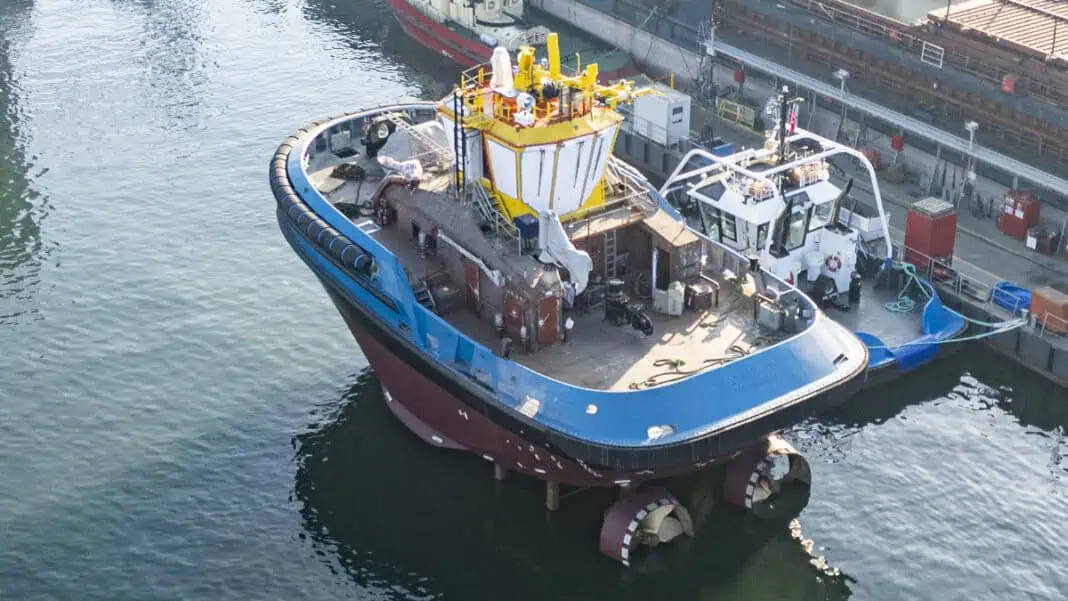Sanmar Shipyard launches the of Latin America’s first electric tug. The groundbreaking vessel is set to arrive in Chile under the service agreement signed earlier this year between Empresa Nacional del Petróleo (Enap) and SAAM Towage, marking a major milestone in the region’s energy transition.
The electric tug is a testament to Enap and SAAM’s shared commitment to reducing environmental impact in maritime operations. With its state-of-the-art electric propulsion system, the tug eliminates greenhouse gas emissions, offering a cleaner and more sustainable alternative to traditional diesel-powered vessels. Additionally, it significantly reduces environmental and underwater noise, contributing to quieter and more eco-friendly port environments.
After this first launch stage, the next step is the sea trials to inspect and verify its static behavior
and operating performance.
The electric tug’s arrival in our country is scheduled for the first half of 2025. Designed by Robert Allan Ltd and built at the Sanmar shipyard, the vessel will operate in Puerto Chacabuco, in the Aysén Region, providing berthing and unberthing services. Measuring 25 meters long and 1meters wide (beam), the tug boasts a maximum bollard pull of over 70 metric tons.
Empresa Nacional del Petróleos, Corporate Supply Chain Manager, Mauricio Naveas, commented that “this project is relevant for our company not only because it will allow us to meet the service needs of Puerto Chacabuco, but also because it is a step forward in reducing both carbon emissions and environmental and underwater noise in our logistics chain, an effort that is in line with having increasingly sustainable processes”.
According to SAAM Towage’s Sustainability and Development Manager, Pablo Cáceres, “This is a key milestone to ensure that the tug operates to the highest safety standards in the subsequent phases of its development. This vessel is the third in our electric fleet, which marks a decisive step into the future with increasingly sustainable operations. At Chacabuco we will be reducing CO2 emissions by 100% compared to current operations,” he added.












